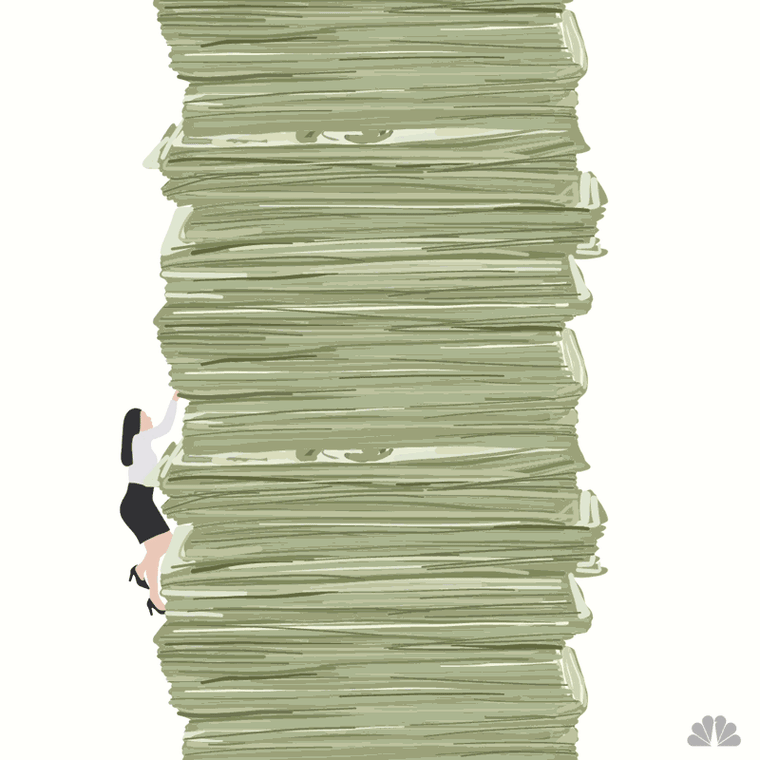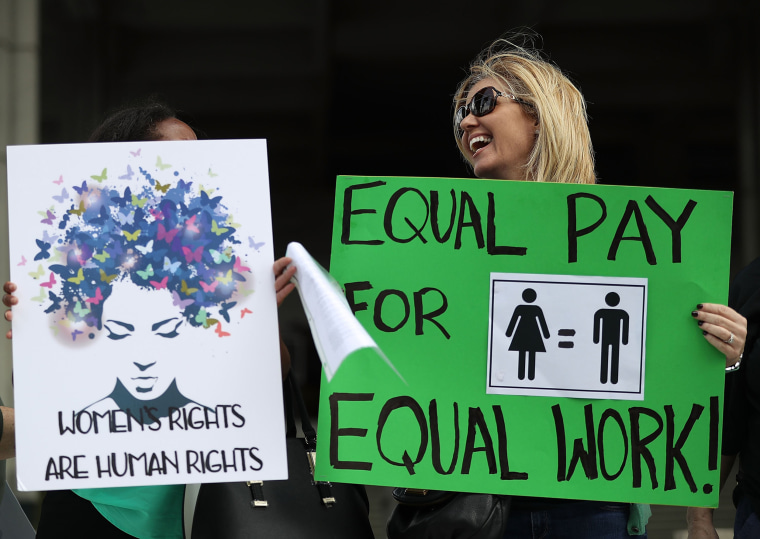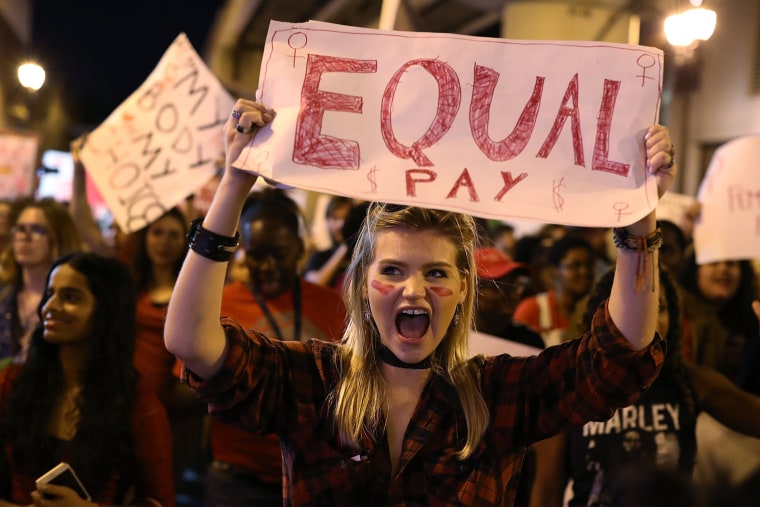Equal Pay Day marks the wage discrepancies that exist between men and women in the workforce. Here's everything you need to know about how it came to be and how far things have come.

The reason Equal Pay Day is on a Tuesday in April
Equal Pay Day was started by the National Committee on Pay Equity (NCPE) in 1996 to highlight the gap between men and women’s wages. Equal Pay Day is held every April to symbolize how far into the year women need to work to make what men did in the previous year, according to the NCPE. It is always on Tuesday to “represent how far into the next work week women must work to earn what men earned the previous week.” In other words, because women earn less on average, they must work longer for the same pay.
How the fight for equal pay got political

In 1963, President John F. Kennedy signed the Equal Pay Law, which made it illegal to pay women lower rates for the same job as their male counterparts on the basis of gender. At the time, women earned 59 percent of men’s wages. By 2000, women earned 74 percent of men’s wages.
Related: See what your state is doing to close the gender pay gap
In 2009, President Barack Obama overturned a Supreme Court decision that said employees could not bring a salary discrimination suit if more than 180 days passed since the initial wage discrimination occurred, even if it had continued, by signing the Lilly Ledbetter Fair Pay Act. The act prohibits gender-based discrimination and allows women to fight back against discrimination in the workplace regardless of when it began.
Are we making progress?
It’s still slow. In 2014, Senate Republicans unanimously blocked legislation on equal pay. The bill would have made it illegal for employers to punish workers who discuss their salaries. The aim was to close a wage gap that found women making 77 cents for every dollar that men earn.
However, this number is not true for all women. While women across all races and ethnicities lag behind those of white men, as well as men in their own racial or ethnic group, minority women face greater challenges in this regard. Data from a 2016 study illustrates that while white, non-Hispanic women make 83 cents for every dollar, Black women make 66 cents, and Hispanic women make 60 cents.
So, where are we now?

On March 27, President Donald Trump pulled back the 2014 Fair Pay and Safe Workplaces order put in place by Obama to protect women in the workplace.
It’s clear that women’s fight for pay equity and work opportunities is far from over. In fact, it will take 169 years for the world to completely close the economic gender gap. Equal Pay Day is a reminder that despite some progress, the wage gap persists, and women have ways to go when it comes to economic equality.